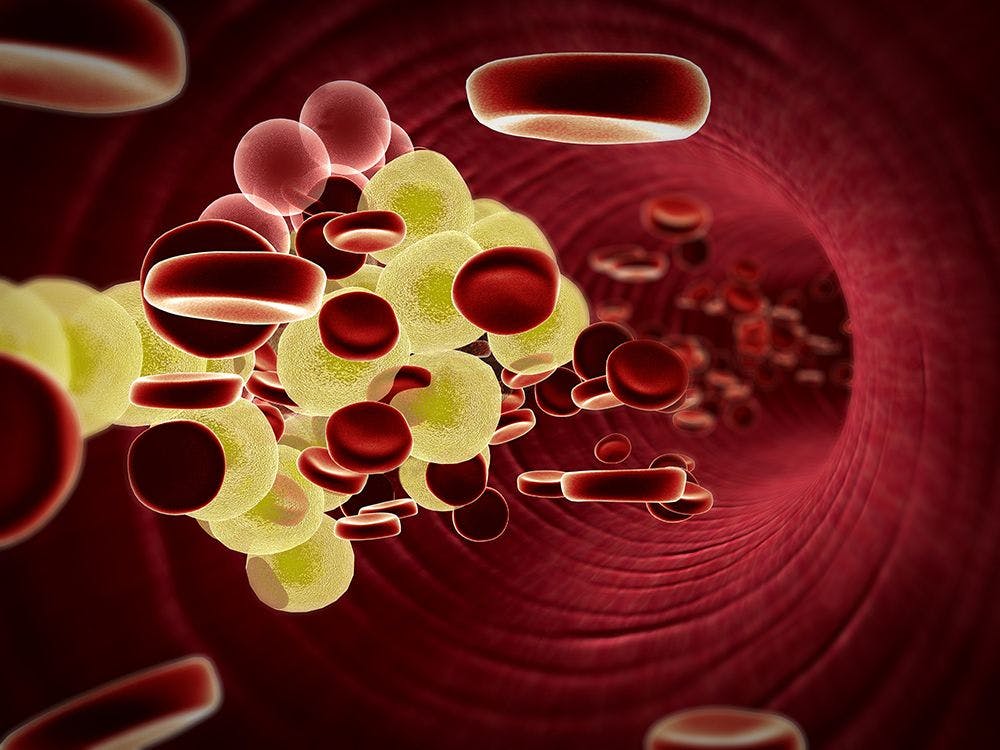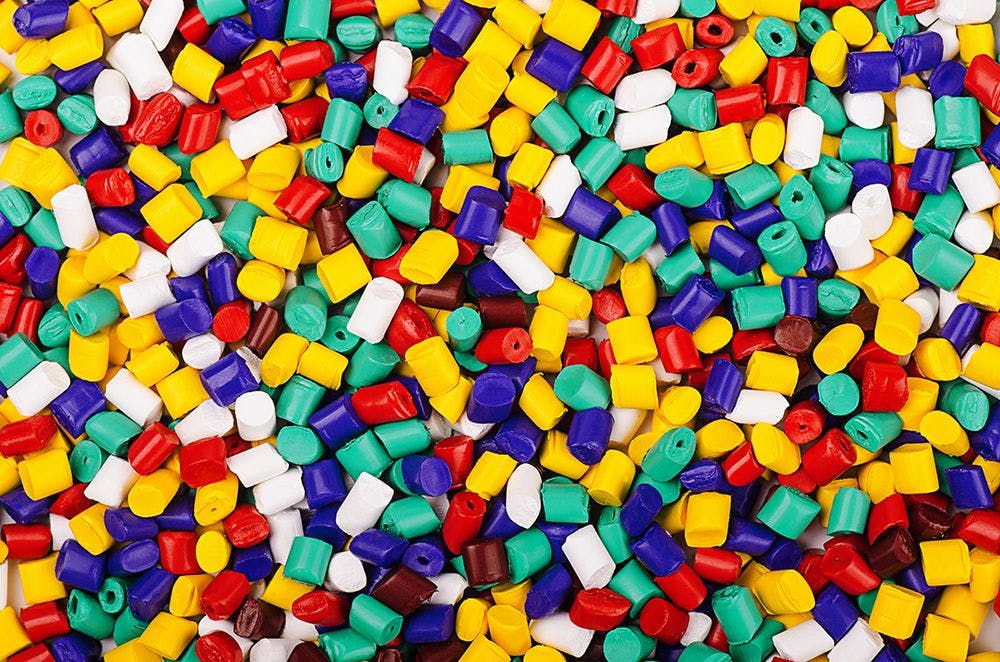12 Tips for Successful Chromatography in 2021
Inspiring tips from successful analytical chemistry practitioners, to boost your laboratory activities and brighten your New Year.
peshkov/stock.adobe.com

Following what has a been the most challenging of years both inside and outside of the laboratory, I wanted to produce a more light-hearted yet inspiring review of 2020 from Arch Sciences Group laboratories. Here then are our 12 tips for successful chromatography in 2021, contributed by analytical chemistry practitioners from around the group, which we hope will have a positive impact on your laboratory activities, in what we hope will be a much brighter New Year. You will find a collection of (hopefully) useful hints and tips based on very current issues in chromatography practice.
1. Begin each method development and validation using a brand new (well-conditioned) column
Every different sample matrix and eluent system we introduce into a high performance liquid chromatography (HPLC) system may produce changes to the surface chemistry of the stationary phase. Some of these changes may be subtle and easily reversible, while others are more difficult to revert, such as the use of highly bound ion pairing reagents (both more and less volatile) or the introduction of intractable matrix compounds. Each change will render the column chemistry less like it was “straight out of the box” and therefore make chromatographic behaviour following a change in variables, a little more difficult to interpret. While it might be possible to undertake a long yet successful method development using a “pre-owned” column, imagine your shock and surprise when you come to reproduce your lovely new method on a fresh column from the vendor and your chromatography suddenly looks very different. Worse still, you come to investigate three different batch numbers of stationary-phase material for robustness assessment during method validation, and they all produce a different chromatogram to the method you just developed! We should first establish that this is not simply a column “conditioning” problem, but let’s face it, the secret to column conditioning is simply allowing enough eluent or sample matrix injections to modify your stationary-phase surface chemistry to an equilibrium condition—which in itself should give you a warning that the phase you are developing your method on, is not that which the manufacturer sold to you! At the very least, you should ensure that columns are thoroughly flushed and stored correctly after each batch of analysis or stage of method development, but we really would recommend you start each method development or validation with a brand new column that is then properly conditioned.
2. Don’t use internal standards to correct for fundamental method issues
Internal standards are not a panacea. Do not use an internal standard to correct for fundamental method problems. Fix the problem. As an example, most modern instruments with an autosampler are capable of approximately 1.0% relative standard deviation (RSD) on replicate injections of a single “clean” standard solution. If your precision is much worse than this, then there’s a much more fundamental problem with your method. Fix the problem, don’t cover it up by using an internal standard.
3. Use of a delay switch to prevent mass spectrometer source fouling
Boy oh boy have we been dealing with some pretty “heavy” matrices this year! Soil extracts, oils, surfactants, and vegetable homogenates to name but a few. While modern atmospheric pressure ionization (API) interfaces are relatively robust, source performance can degrade relatively quickly when introducing involatile or highlight adsorptive materials. In general, we think of the correlation between the use of involatile buffers or the introduction of dirty matrix materials and the frequency of source maintenance, but it really doesn’t need to be this way! Simple, automated valve switching technology can be a life saver when looking for improved instrument uptime and long maintenance intervals. If the column effluent is diverted to waste during the time at which the heavy matrix or highly buffered (typically aqueous) portion of the eluent is eluting, then the source can be very effectively protected. It’s true that as chromatographers we really fear “missing out” on seeing what portions of our chromatogram contain, but for well characterised methods (resulting from good method development and validation) this should not hold any fear for us. Most modern HPLC systems can be fitted with low internal volume switching valve technology in the column compartment that can be operated on a time basis to divert the eluent to waste, or to a more robust detector (such as UV) if we really do have those fear of missing out worries.
4. Protect eluents from evaporation to reduce retention time drift
Modern eluent systems often contain more volatile buffers (ammonium acetate, for example), pH adjusting species or silanol masking reagents additives such as triethylamine. It’s a fact that, on standing, these more volatile additives may be lost from the eluent over time, and this issue can be exacerbated as the eluent is used up and the headspace within the eluent bottle increases. Of course this may mean a change to the eluent buffering capacity or pH, which in turn may lead to changes in peak shape or retention time and is often the reason we see “drifting” retention times during an extended campaign of analysis. Always ensure that your mobile-phase bottles are capped (but remember to avoid vacuum formation by using caps with at least one small hole to atmosphere) and don’t store eluent bottles in a warm environment or in direct sunlight. It’s best practice (although not always practically possible) to make up a fresh batch of mobile phase for each analytical campaign. Avoid capping eluent bottles with laboratory plastic film, tin foil, or laboratory “blue roll,” especially when undertaking trace analysis.
5. Buffers in LC–MS—a little goes a long way
So, this old trope was brought into sharp focus for us in the Arch Group laboratories during a recent method development exercise. Most of us know that any other electrolyte (buffer) species present within the eluent can compete with our analytes in the electrospray process, but the mechanisms of the so‑called “ion-suppression” process can often take us by surprise. While screening for the best API response mode for a group of analytes, it appeared that positive ion electrospray gave the best response, and as we were dealing with analytes at very low concentration, we plumped for this. As we began to explore the method sensitivity, we struggled to achieve the required limits of quantitation and after a long optimization exercise, tried a reduction in buffer concentration from 20 mM to 5 mM, which brought some improvements but, not enough. I’m not sure why, but we looked at the negative ion signal under these conditions and the sensitivity had leapt up (the analytes were polyfunctional), and we were able to obtain both the required sensitivity and reproducible chromatography. A salutary lesson in the exploratory nature of method development in chromatography and the highly unpredictable nature of the electrospray process in LC–MS!
6. Use a retention gap in gas chromatography for better sensitivity with splitless, large volume, thermal desorption or purge and trap sample introduction
In our specific example we were developing a trace analysis for a range of analytes in organic extracts using Large Volume (Programmed Thermal Vaporising) injection. The analytical method was well established using splitless injection conditions, but we just couldn’t achieve the required method sensitivity and peak shapes were a little suspect. We struggled to optimize the injection conditions for almost a week without success until one of our chemists suggested trying a retention gap. We installed just 1 m of an uncoated (deactivated) retention gap which immediately delivered a sensitivity increase of more than an order of magnitude with much improved peak shapes. We were reminded that the mechanisms at play during analyte/solvent focusing in GC can be a real confounding factor or can be used to our advantage. The uncoated silica almost invariably allows the analytes to travel through the retention gap and focus in a very tight band when they encounter the coated analytical column. The secondary benefit, of course, is the ability of the retention gap to somewhat function as a guard which can be replaced when necessary but at lower cost. We also found out during this exercise that GC columns which incorporate a retention gap (such as a single column with a length of uncoated material at the inlet end) are very much more effective at peak focussing than two columns joined with a column union. We believe this has to do with the activity and dead volume of the associated with the union.
7. C8 can be better than C18 (especially with UHPLC)
We’ve spent a lot of time this year in an in‑depth analysis of the selectivity of a whole range of HPLC stationary-phase chemistries. It never fails to surprise me that C8 columns produce a very faithful reproduction of the C18 separation on a slight compressed scale. Here I refer to the same column product line from the same column manufacturer. As a consequence, we have switched our focus somewhat to using C8 columns during method development screening, as we invariably obtain similar results in a shorter timeframe and often better results when using rapid gradients. While there is a risk in “compressing” the chromatogram from a resolution perspective, when using ultrahigh-pressure liquid chromatography (UHPLC), where some resolution can often be sacrificed due to the very high efficiencies obtained, using the C8 columns as a starting point for method development has proved to be very successful.
8. Screening a variety of C18 chemistries versus a wide range of diverse stationary-phase chemistries for HPLC method development
Again, related to our column screening activities, we’ve been taking great interest in building column screening sets for early phase method development. Traditionally, our approach was to build an informed column set with a range of different chemistries, C18, C8, Embedded Polar, Phenyl Hexyl, Pentaflurorphenyl (PFP), and so on. We typically try to match the expected analyte retention and selectivity behaviour with our column choices, including considerations for analyte Log P(D) values and pKa, especially where we expect retention to be lower due to the presence of more polar analytes. However, what we have come to implement is based on something that we have inherently known for some time, that the range of retention and selectivity obtainable from the vast diversity of C18 columns alone can deliver some very surprising results. Often, when examining the resulting chromatograms from a widely chemically diverse column set, useful interpretation of the “so what, where next” questions can be confounded by the big differences in the data sets that result from the various different chemistries used. However, when screening a diverse set of, say, six C18 columns, not only can the results be quite surprising in terms of the variations in chromatography, but the interpretation of the resulting chromatograms can be more straightforward and more amenable to in‑silico optimization. Of course, if there are no “promising” separation candidate columns, one can always move away from C18 for phase two of the column screening.
9. Gradient delay (dwell) volume has a big impact on HPLC method transfer
It’s not surprising that vendors are offering UHPLC instruments which can ”emulate” those from other vendors, given that small differences in extra‑column volume and gradient dwell volumes can make such a difference to chromatographic retention and selectivity between UHPLC systems. This was starkly highlighted to us in a recent inter‑group study where we needed to account for differences in systems between vendors in order to be able to reproduce methods on ultra-high-performance liquid chromatography (UHPLC) systems from different vendors in two of our locations. Of course, if you don’t have ”emulation” capabilities on your system, it’s reasonably straightforward to measure extra column volumes between systems and to balance these with modifications to hardware (typically tubing lengths, inner diameter, and connector types), if necessary. Of course, this is not always possible as the viability in system volume may be inherent within the detector flow cells, mixers and autosampler vales, and tubing for example, although most UHPLC separations have some efficiency to spare. There are also simple methods to assess gradient dwell volume, which can be the bigger issue with reproducing separations across vendor platforms, in which case software tools are available to help modify gradients or use delayed injection or pump settings in order to ”balance” the dwell times between systems. Once extra column and gradient dwell volumes are calculated, it is good practice to record these in the system logbook so this work isn’t unnecessarily repeated.
10. Expect, and plan for, proper conditioning of GC systems and columns
We understand that in HPLC, columns need some ”equilibration” to achieve a steady state, and this has been discussed in Tip 1. While we find this generally acceptable, we often do not have the same expectations for GC columns and systems. The stationary‑phase coating process tends to be more effective, and GC column manufacturers do a pretty good job of covering a good deal of the silanol groups on the column surface with immobilized stationary phase, and their deactivation processes are very effective. However, all of this being said, we still modify the GC column with our samples, and matrix components will irreversibly adsorb to the phase, especially in the first few meters of the column. When using particularly challenging samples (ours contained a non‑ionic surfactant and believe me we tried a LOT of sample preparation approaches to remove it all), we have to expect that some column conditioning will be necessary in order to reach an equilibrium state. It is sometimes useful to inject a highly concentrated sample in order the reduce the number of conditioning samples required and, as stated in Tip 6, one might try a guard column to assess the usefulness and degree of protection afforded to the analytical column. This didn’t work so well in our case. Of course, as well as the column, the inlet liner contains silanol species and the requirement for conditioning will depend upon the quality of the manufacturer deactivation as well as the type and number of samples post installation.
11. Properly investigate your regression analysis and do not just rely on the regression coefficient (r2) as a measure of goodness of fit
Our technical group at Arch Sciences regularly get asked questions about calibration and linear regression. How do we prove the curve is linear, should we use weighting, can you rely on the regression coefficient to assess the true ”quality” of the regression line, should we include the origin in a calibration line, how do we justify a calibration point as an outlier, and so on and so forth. Fortunately we have a couple of crack amateur statisticians on our staff and we set about building some Excel-based tools for those wishing to undertake method validation or who require some statistical justification of approaches taken to calibration based on instrument response. Linearity can be further assessed using residuals assessment and evaluating residuals plots alongside Signs tests for randomness. Residuals plots can also be used for outlier justification. Decisions on the inclusion or exclusion of the origin can be taken using T-tests. Analysis of variance (ANOVA) can be used for Lack of Fit analysis, as well as to test for heteroscedasticity and the justification for applying a weighting to the regression analysis. While all of these tests may seem a little “over the top,” I can tell you that when justifying a particular approach to a client or even a regulator this type of in‑depth information is very useful. Further, a more in‑depth statistical evaluation allows for better data quality and productivity when we use the most appropriate regression model for quantitative analysis, and don’t try to force all data into a linear regression model.
12. Remember that an API interface is a complex set of variables—which are meant to be optimized
I guess most of us are guilty of the ”lock and leave” approach with API interface settings. Once we have a set of conditions for the applied sprayer potential or corona potential, nebulizing gas flow, drying gas flow and temperature as well as the relative positioning of the sprayer and sampling orifice we leave well alone. However, we should accept that all of these parameters, regardless of our notion of a ”sweet spot” or ”best value” are interactive and depend heavily upon the analyte, sample matrix, and eluent conditions of our method. We have had several examples during the year where, with a small amount of optimization based on a very simple iterative optimization approach (note I have not used the words ANOVA or Design of Experiments here) we were able to achieve significantly improved response compared to that obtained with our ”standard” instrument settings. Interestingly, when we reflect on our data optimization exercises from across the business, the most effective parameter in electrospray interface optimization appears to have been drying gas temperature. I don’t know why I’m surprised really, because we know that the analyte gas‑phase liberation is highly dependent upon the coulombic fission processes that are driven by a reduction in droplet size, which in turn is driven by the solvent evaporation caused by the drying gas. If there is a final message in here, it is never to say the words ”we just can’t get the sensitivity” when talking about LC–MS, until you’ve tried some basic source parameter optimization!
Best wishes to everyone for a successful year of separations in 2021. Oh, and don’t forget to make sure all of your “New Year’s resolutions” are accompanied by an improvement in selectivity.
Acknowledgements
With thanks to my colleagues Suzanne Corcoran, Nick Morley, Sam Albeke, Colin Towers, and Tim Liddicoat at Arch Sciences Group, for providing input and inspiration for this article.
Tony Taylor is Group Technical Director of Crawford Scientific Group and CHROMacademy. His background is in pharmaceutical R&D and polymer chemistry, but he has spent the past 20 years in training and consulting, working with Crawford Scientific Group clients to ensure they attain the very best analytical science possible. He has trained and consulted with thousands of analytical chemists globally and is passionate about professional development in separation science. His current research interests include HPLC column selectivity codification, advanced automated sample preparation, and LC–MS and GC–MS for materials characterization.

Altering Capillary Gas Chromatography Systems Using Silicon Pneumatic Microvalves
May 5th 2025Many multi-column gas chromatography systems use two-position multi-port switching valves, which can suffer from delays in valve switching. Shimadzu researchers aimed to create a new sampling and switching module for these systems.
Studying Cyclodextrins with UHPLC-MS/MS
May 5th 2025Saba Aslani from the University of Texas at Arlington spoke to LCGC International about a collaborative project with Northwestern University, the University of Hong Kong, and BioTools, Inc., investigating mirror-image cyclodextrins using ultra-high performance liquid chromatography–tandem mass spectrometry (UHPLC–MS/MS) and vibrational circular dichroism (VCD).

.png&w=3840&q=75)

.png&w=3840&q=75)



.png&w=3840&q=75)



.png&w=3840&q=75)













